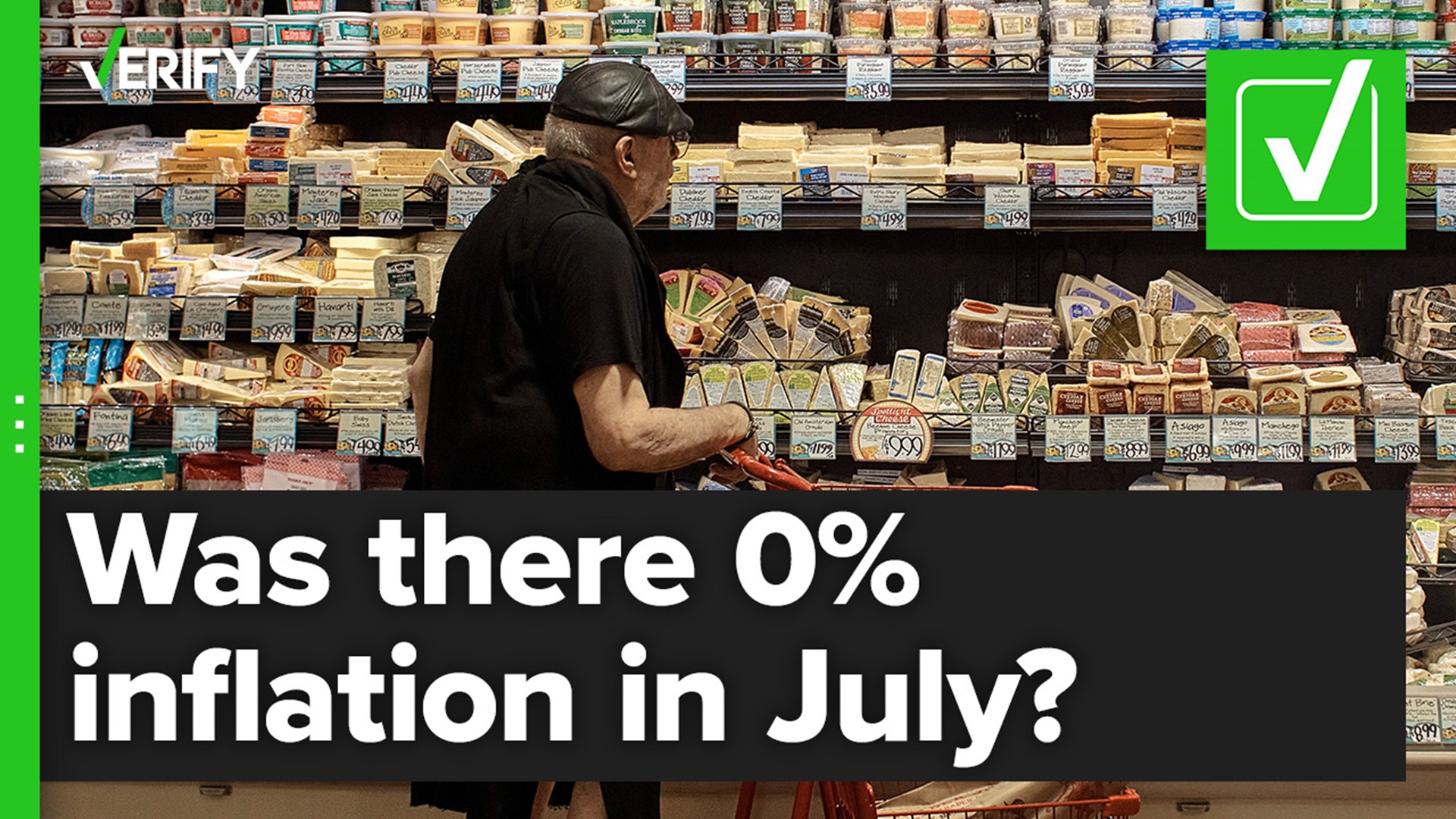From gasoline to groceries, Americans have paid more money for the same items in 2022 due to rising inflation.
But is it possible that inflation in the U.S. is easing? That’s what President Joe Biden claimed in a tweet on Aug. 10, writing that the inflation rate was 0% in July 2022.
Some people on social media have disputed that claim, writing that the inflation rate was 8.5% in July 2022.
Several VERIFY readers asked the team to fact-check the claim that inflation fell to 0% in July.
THE QUESTION
Did inflation fall to 0% in July 2022?
THE SOURCES
THE ANSWER
Yes, there was 0% inflation in July 2022, but inflation is still at 8.5% annually.
WHAT WE FOUND
The Consumer Price Index (CPI), calculated by the Bureau of Labor Statistics (BLS), is the most widely used measure of inflation. It is designed to measure price changes on a “basket” of many everyday goods and services.
To calculate the inflation rate, the BLS compares the index’s value over one period in time to another, such as month to month (the monthly rate of inflation) or year to year (the annual rate of inflation), the Federal Reserve Bank of Cleveland explains.
The CPI was unchanged from the end of June to the end of July 2022, according to a BLS report published on Aug. 10.
That means there was 0% inflation for the month of July, which was primarily due to falling gas prices. According to the BLS, the gasoline price index fell 7.7% in July and “offset increases in the food and shelter indexes, resulting in the [CPI] being unchanged over the month.”
GasBuddy reported on Aug. 9 that the national average price of gas fell below the $4 mark for the first time since early March 2022.
“Gas prices have declined over $1 per gallon since peaking at $5.03 on June 14, fueled by falling oil prices over the last month. Americans today will spend nearly $400 million less on gasoline than they did in mid-June,” GasBuddy wrote in a press release.
But Biden’s claim about 0% inflation needs context. Inflation is still sitting at an annual rate of 8.5% when comparing prices in July 2021 to July 2022 – remaining close to a 40-year high. This is well above the Federal Reserve’s goal of a 2% annual inflation rate.
In June, the annual inflation rate was 9.1%, so the 8.5% annual rate for July does represent a slight decrease.
Core inflation, which measures the change in the cost of goods and services while excluding volatile food and energy prices, rose 0.3% in July, though this is a smaller increase than in the previous three months, the BLS said. The core inflation rate is up 5.9% annually.
Food continued to grow more expensive in July, with the price index increasing 1.1% over the month. The cost of medical care, vehicle insurance, furniture, new vehicles and recreation also rose in July, according to the BLS report.
On the other hand, the cost of airfare, used cars and trucks, and clothing fell in July.
In its monthly economic review for August 2022, the National Retail Federation (NRF) wrote that “many of the forces contributing to inflation will not be unwound soon,” but there are some signs of “potential relief” as the prices for oil and other commodities decline.
“Currently, inflation is well above the Federal Reserve’s comfort zone, and shorter-term inflation expectations are high although longer-term expectations appear better anchored,” NRF said. “Moreover, inflation forecasts continue to be highly uncertain and supply constraints will factor into the second half of the year.”
NRF expects that the Consumer Price Index will average 6.2% for all of 2022.

